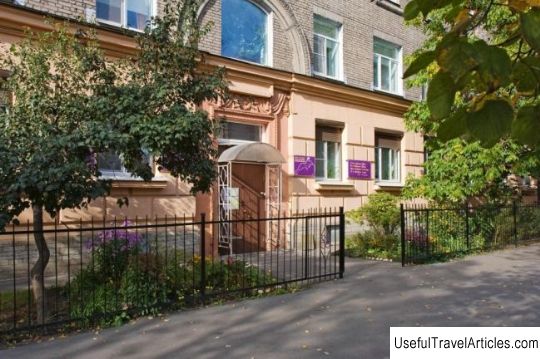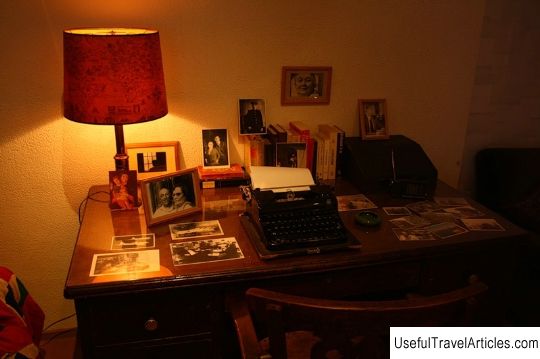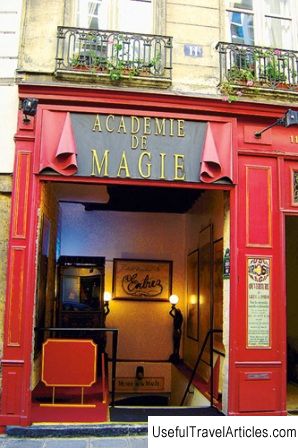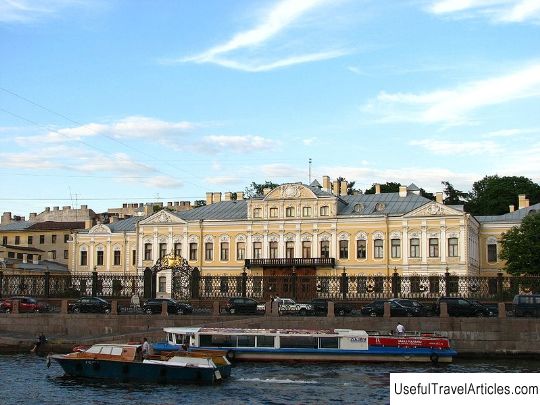Anna Akhmatova Museum in the Fountain House description and photos - Russia - St. Petersburg: St. Petersburg
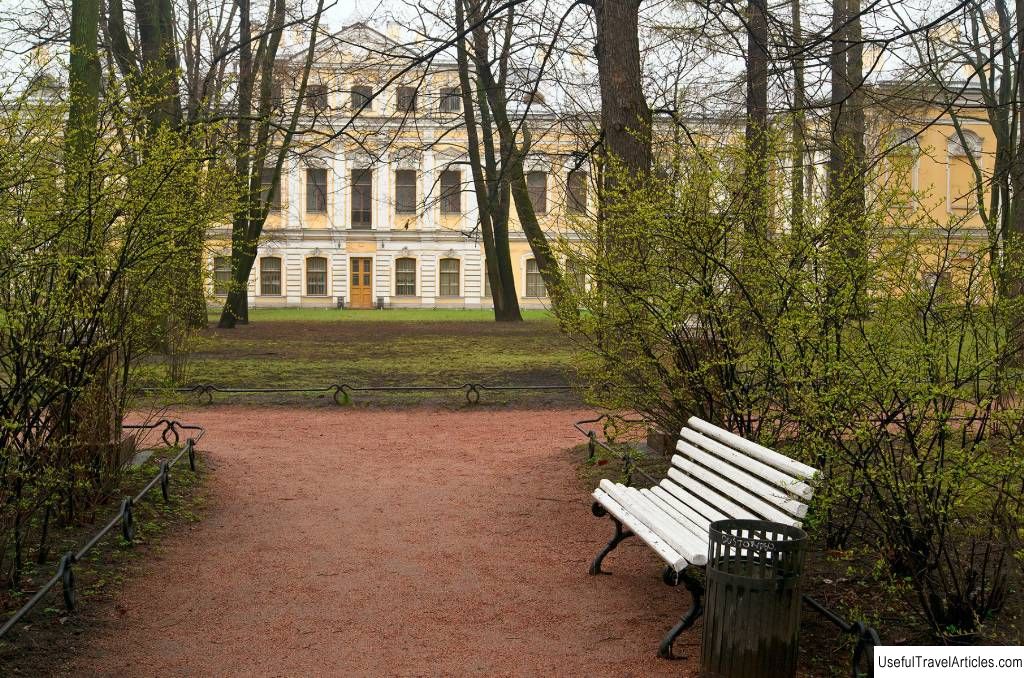
Anna Akhmatova Museum in the Fountain House description and photos - Russia - St. Petersburg: St. Petersburg. Detailed information about the attraction. Description, photos and a map showing the nearest significant objects. Photo and descriptionLocated in the Fountain House (the St. Petersburg palace of Counts Sheremetevs ), the Anna Akhmatova Museum was founded in the late 1980s. Its opening was timed to coincide with the centenary of the great poetess. At that time, it was the only museum in the city whose exposition told about the fate of the intelligentsia of the Silver Age , who lived and worked in the conditions of Soviet totalitarianism. History of the MuseumThe construction of the palace, in the southern wing of which the museum is currently located, began in the first half of the 18th century . Then the palace and other buildings of the estate were completed and rebuilt for almost two centuries. Speaking about the author of the palace project, it is impossible to name any one name: in fact, the building is the fruit of the creativity of several architects - Savva Chevakinsky, Andrey Voronikhin, Giacomo Antonio Domenico Quarenghi, Fyodor Argunov, Ivan Starov . The palace in which the museum is located is itself an architectural and historical monument. From the mid-30s to the early 40s of the XX century, the building housed an exposition dedicated to scientific discoveries . It was created to popularize the scientific knowledge of the time. During the war years, the exposition was destroyed. From the mid-40s to the 80s of the 20th century, the Arctic and Antarctic Research Institute was located in the palace. At the end of the 80s, it was decided to open a museum of the famous poetess. Oddly enough, it was originally opened as branch of the Fyodor Dostoyevsky Museum : this simplified many organizational aspects. Over time, it turned into an independent museum. The city administration paid great attention to the created museum: there were practically no bureaucratic delays, all the necessary funds were allocated immediately and in the required amount. Some cultural figures even got the impression that the city leaders were trying to atone for the guilt of their Soviet predecessors before the famous poetess (whose fate, as you know, was very difficult). As mentioned above, southern wing was chosen to host the museum exposition: in it, on the third floor, the poetess lived from the mid-20s to the early 50s of the XX century. During the blockade, she, along with many residents of the city, was evacuated, but after the end of the blockade she returned to the wing. The collection of exhibits began immediately after the decision to open the museum was made. The photographs of the poetess, her manuscripts, books, personal belongings, various documents related to her biography began to enter the museum. The circle of persons who have preserved various relics associated with the name of the poetess was determined. In Soviet times, it was actually anathema, but people who knew her or simply loved her work carefully kept the manuscripts of poems that came to them, old yellowed photos, books with her notes ... More than fifty people helped the museum staff to collect the collection, prepare the exposition ... A complete list of these donors was posted on the wall of the museum on the day of its opening. For many people, the new museum became a vivid manifestation of the positive changes that were taking place in the country at that time. Of course, not all the changes that took place at that time were positive, but the opening of the museum certainly became a manifestation of the positive that was happening in the country and in the minds of people. In the early 2000s, the exposition was divided into two parts - memorial and literary . The first was located in the aforementioned Akhmatov apartment (which was largely restored to its original appearance), and the second - in an adjacent room. Anna Akhmatova Memorial Apartment Let's tell you more about one of the parts of the exposition - the memorial apartment of the poetess. Climbing the steps to this apartment, pay attention to the staircase: this is a kind of border, it separates the luxurious palace interiors of the past centuries from the usual Leningrad communal apartment of the middle of the XX century. Climbing this staircase, you will see the premises of the memorial apartment. - In the hallway, visitors see a tiled stove and a regular coat rack . Nearby there are several carpet-bags, an umbrella stand ... This is how the hallways of those apartments, where the Leningrad intelligentsia lived in the middle of the 20th century, looked like this. The interior allows you to immediately immerse yourself in the atmosphere of that time immediately after entering the apartment. - Kitchen and corridor , which you will see, were originally intended for the servants of the daughter of Count Sheremetev (recall that the palace was built in the 18th century for his family). In Soviet times, the situation, of course, changed: several residents of a communal apartment used the kitchen. - In the office of her husband Nikolai Punin , an art historian and art critic, the poetess spent a lot of time: here she worked on articles about the work of Alexander Pushkin. Here she compiled a biography of her ex-husband Nikolai Gumilyov, collecting memories of him, excerpts from letters ... The air of this office seemed to retain the atmosphere of those distant years when Anna Akhmatova was bending here over a writing table in the light of a dim lamp ... - Dining room was once a kind of center of the entire apartment. In the 20s and 30s of the XX century, a gramophone sounded here, they played chess at a large table and received guests. The dining room was known among the friends of the poet as the “pink room”: it got this name because of the color in which its walls were painted. - In the memorial apartment you can see the interior of the room where the poet lived in the early 40s . The memories of friends who visited the apartment at that time are quite contradictory. Someone called the room wretched, argued that complete "collapse" reigned in it. Others saw many beautiful objects here that have survived from pre-revolutionary times. Some friends of the poetess even talked about the "magic light" that filled the room. - There is another "version" of the Akhmatov's room in the apartment - the mid-40s of the XX century . It recreates the atmosphere in which the poetess lived after returning to the northern Russian capital from evacuation (from Tashkent). - And, finally, you will see the so-called "White Hall" ... The literary part of the exposition is located there. The name of the hall is taken from Poem Without a Hero (one of the most famous works of Anna Akhmatova). This room will take you from the everyday reality of a communal apartment to the wonderful world of poetry - in which, in fact, the famous poet lived. Museum collection Currently, the collection of the museum includes more than fifty thousand items . The collection of photo documents is especially rich: it contains about thirty thousand exhibits. These include photographs and negatives, audio and video recordings. The main part of the collection consists of photographs of the poetess, negatives of such photographs, as well as several photographs of photographs. The collection of books contains about fifteen thousand items. It began about a year before the opening of the museum. The collection includes not only books of poems by Anna Akhmatova, but also works of her contemporaries. The most valuable items in the collection were donated to the museum by the widow of the bibliophile Moses Lesman . Part of the collection, which includes various manuscripts and documents , has about four thousand items ... The oldest of the manuscripts and documents date from the second half of the 19th century, the most recent ones date back to the beginning of the 21st century. Here you can see not only the manuscripts of the poetess, but also drafts of the works of some of her famous contemporaries. I need to say a few words about the collection of figurative materials (paintings, sketches, etc.) ... It contains about three thousand storage units. Some of the exhibits still remember the amazing atmosphere of the Silver Age, others appeared much later ... Some of the visual materials were created already today. The collection includes several portraits of the poetess, written during her lifetime. Interesting facts After the arrest of Nikolai Punin, his coat remained hanging on a hanger in the apartment, so it hung for many years: the poetess left it as a continuous reminder of one of the terrible events of her life. This coat still hangs there. Now it is one of the exhibits of the museum. On the writing table, which is exhibited in the museum, are laid out the original letters of Anna Akhmatova. They were written by her in defense of her son, who was repressed. BranchesThe museum has two branches. They are open in the same palace where the museum itself is located. The exposition of one of these branches represents the interior of the office in which the poet Joseph Brodsky worked in the USA. The second branch is the museum-apartment of the scientist, writer and translator Lev Gumilyov . This branch is located in the apartment where the scientist spent the last two years of his life (at the beginning of the 90s of the XX century). It retains the original furnishings, and you can see many things that belonged to the scientist. Notes
|







